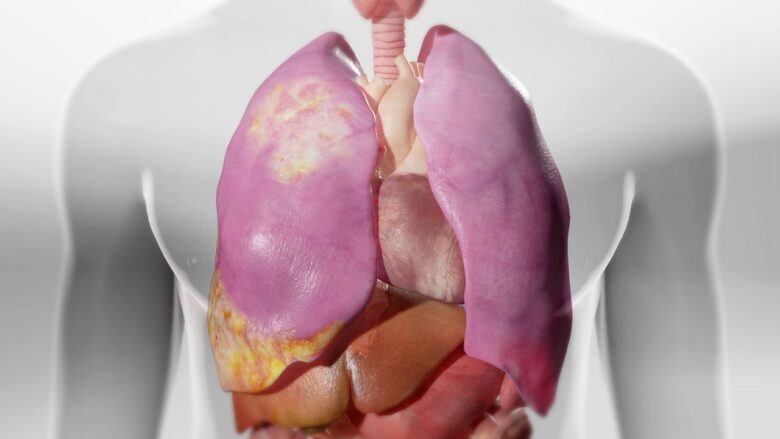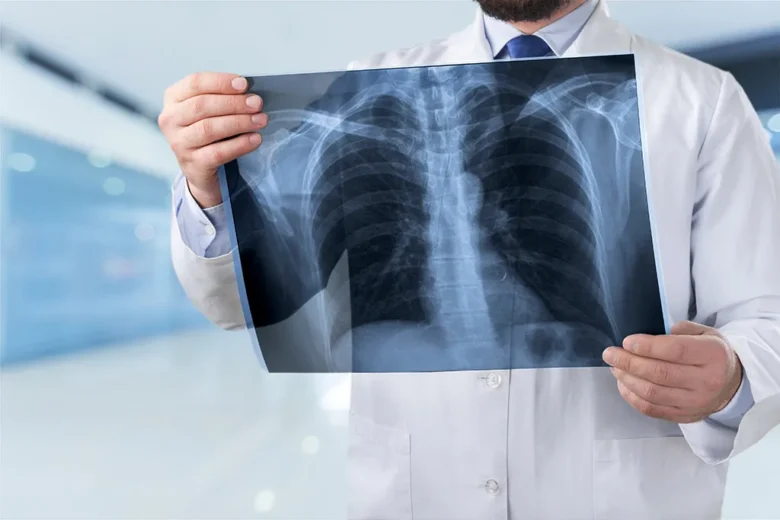Did you know that breast cancer is the second most common type of cancer? Other common cancers affect the bladder, lungs, prostate, and more. But there are different types of cancer that, while far less common, are aggressive. One of them is called mesothelioma. Several thousand diagnoses are made annually.
Mesothelioma forms in the mesothelium, the layer of tissue on internal organs. The most prevalent type of mesothelioma is pleural mesothelioma, which forms in the lining of the lungs.
Continue reading for eight facts about mesothelioma cancer that you might not have heard about.

Source: wkhs.com
Contents
- 1. Several Thousand Diagnoses Made Annually
- 2. Men at Much Higher Risk of Getting It Than Women
- 3. Occupational Risks Can Increase Odds of Getting the Disease
- 4. Risks of Getting the Disease Increase With Age
- 5. Low Survival Rate…But There’s Hope
- 6. There Are Different Types of Mesothelioma
- 7. Following Up Early on Symptoms Can Improve Outcomes
- 8. Treatment Costs Are High
1. Several Thousand Diagnoses Made Annually
Between 2,500 and 3,000 cases of mesothelioma are diagnosed annually in the U.S., according to Mesothelioma Guide. According to another source, mesothelioma accounts for less than 0.3% of all cancer diagnoses in the U.S.
So, you can see that the odds of getting this cancer are slim. But if you or someone you know and care about is diagnosed with it, the slim odds of getting it will be a moot point. It is rare, but it’s aggressive. Being diagnosed with it generally means a shortened lifespan.
2. Men at Much Higher Risk of Getting It Than Women
Did you know that over 75% of mesothelioma diagnoses are among the male population? One reason is the exposure to asbestos in different professions and trades dominated by males. Mesothelioma not only is more common among men than women, but also is more prevalent among Caucasian and Hispanic people than among Black or Asian people.
3. Occupational Risks Can Increase Odds of Getting the Disease
Asbestos exposure is the most significant risk factor for a mesothelioma diagnosis. It accounts for up to eight in 10 cases of cancer. People who work in industries that have previously involved asbestos exposure are most at risk. Industries include mechanics, shipbuilding, factor, mining, construction, and the military. But second-hand asbestos exposure is also problematic. Someone who lives with someone who works in an environment where asbestos is at risk. Asbestos particles can transfer from someone’s skin or clothing to another person.

Source: awhsolicitors.co.uk
4. Risks of Getting the Disease Increase With Age
Around two out of three people diagnosed with mesothelioma are 65 or older. It’s seldom found in anyone younger than 45 years old.
5. Low Survival Rate…But There’s Hope
The five-year relative survival rate for the disease is 12% in the U.S. One reason the survival rate is so low is that the cancer is usually diagnosed at an advanced stage. The statistic is an estimate based on trends. Factors that impact survival rates include the following:
- When the diagnosis is made
- The age of the person diagnosed with the disease
- The person’s overall health
- How well the prescribed treatment plan works
This highlights the importance of getting physicals done regularly. Diseases can be caught more readily if you see your doctor for checkups and annual physicals.
6. There Are Different Types of Mesothelioma
There are various types of mesothelioma. They include the following:
- Pleural mesothelioma affects the chest lining
- Peritoneal mesothelioma that affects the abdomen lining
- Pericardial mesothelioma affects the heart lining
- Testicular mesothelioma affects the tunica vaginalis, which is a membrane that surrounds the testis.
You can break things down further and characterize the disease by the cell types: epithelioid, sarcomatoid, biphasic, and desmoplastic.

Source: awhsolicitors.co.uk
7. Following Up Early on Symptoms Can Improve Outcomes
Early detection and treatment can improve the outcome after a mesothelioma diagnosis. Common symptoms include chest pain, abdominal pain, fatigue, difficulty breathing, difficulty swallowing, coughing, and unexplained weight loss. Remember that not all people with mesothelioma will experience all symptoms. And many of the symptoms are common enough that they will require a trip to the doctor to investigate further. If someone has mesothelioma, they may come down increasingly with more symptoms or the ones they get can worsen.
There are also some symptoms specific to the type of mesothelioma. They include, according to the Mesothelioma + Asbestos Awareness Center, the following:
- Pleural Mesothelioma Symptoms: Pain in the lower back or chest, coughing up blood, persistent coughing, buildup of fluid around the lungs, difficulty swallowing, and shortness of breath
- Pericardial Mesothelioma Symptoms: Shortness of breath, irregular heartbeat or heart murmurs, chest pain, fluid buildup, fever, and fatigue
- Peritoneal Mesothelioma Symptoms: Bowel obstruction, abdominal swelling and pain, nausea and vomiting, fluid buildup, unexplained weight loss, difficulty breathing, weakness, and loss of appetite
- Testicular Mesothelioma Symptoms: Cyst in the epididymis, discomfort in the groin or testes, lump in the testicles, excess fluid in the scrotum, and inflammation of the epididymis
Recognizing symptoms sooner rather than later can open up a great variety of treatment possibilities. Considering that it can take decades between being infected by asbestos and developing symptoms, it’s important to be aware of any health changes. Don’t skip annual checkups, and don’t ignore any symptoms that suggest something needs to be looked into.
8. Treatment Costs Are High
According to one source, mesothelioma treatment can cost hundreds of thousands of dollars and could exceed $1 million. Most of the expense is due to treatment, while secondary costs stem from travel expenses, lost wages, and more. There are also common alternative treatment options that can potentially help, such as consulting a dietician, taking vitamins and minerals, trying homeopathic remedies, and using herbal and dietary supplements.
Remember that the earlier you’re diagnosed and begin treatment, the better your odds of having a better outcome.

Source: mymed.com
Because mesothelioma is so rare, the odds are good that you won’t ever be diagnosed with it. And that’s something you won’t complain about. But, again, if you or someone in your sphere of influence is ever diagnosed with the disease, the low odds of diagnosis won’t matter. One in two people will be diagnosed with cancer at some point in their lifetime — but you’ll at least want to avoid one of the more aggressive types for which the prognosis is decidedly grim.
Mesothelioma is an aggressive form of cancer that affects thousands of people. Your best bet is to make regular doctor visits a part of your health regimen. That way, you’ll have a fighting chance in treating and, hopefully, beating it.
